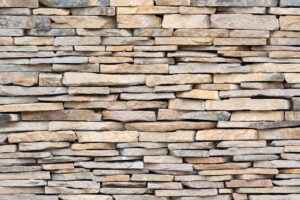In the realm of home exterior design, few materials can rival the classic and sophisticated appeal of natural stone. However, the cost, weight, and installation challenges associated with real stone siding make it an impractical choice for many homeowners. Enter faux stone siding, a revolutionary alternative that combines the visual allure of genuine stone with the convenience of a lightweight, affordable, and easy-to-install material.

In this article, we will explore the world of faux stone siding, its history, manufacturing process, benefits, and how it has transformed the landscape of home exteriors.
- A Brief History of Faux Stone Siding:
Faux stone siding, also known as stone veneer or manufactured stone, traces its roots back to the 20th century. Initially, it was created as a way to mimic the appearance of natural stone while being more cost-effective and lightweight. The first faux stone siding products were primarily made from cement and aggregates, but advancements in technology have since allowed manufacturers to explore a wide array of materials, including polyurethane and high-density polyethylene. As demand grew, the options for textures, colors, and styles expanded, making faux stone siding an attractive alternative to traditional materials.
- The Manufacturing Process:
The process of creating faux stone siding involves a careful combination of artistry and engineering. Initially, molds are created from real stones to capture every intricate detail, ensuring a high level of authenticity in the final product. The chosen material, whether cement, polyurethane, or another durable substance, is poured into these molds and left to set. Once removed, the faux stone panels are meticulously hand-painted to replicate the unique hues and shading found in natural stone, making each piece one-of-a-kind.
- Advantages of Faux Stone Siding:
3.1 Cost-Effective: One of the most significant advantages of faux stone siding is its cost-effectiveness compared to genuine stone. The manufacturing process is less labor-intensive, and the materials used are more affordable, making it an accessible option for homeowners on a budget.
3.2 Lightweight: Unlike natural stone, which can be incredibly heavy and require significant structural support, faux stone siding is lightweight. This characteristic not only simplifies installation but also enables it to be applied to a broader range of surfaces, including those where traditional stone would not be feasible.
3.3 Easy Installation: Faux stone siding is designed to be user-friendly and straightforward to install. With interlocking panels and various fixing methods, it can be a viable DIY project for competent homeowners, potentially saving additional costs associated with professional installation.
3.4 Durability: Modern faux stone siding materials are engineered to withstand the elements, including harsh weather conditions and UV radiation. They are resistant to chipping, fading, and warping, ensuring long-lasting beauty for the exterior of homes.
3.5 Versatility in Design: Faux stone siding offers homeowners an extensive selection of styles, colors, and textures, allowing them to create a personalized look that complements their home’s architecture and aesthetic preferences. From rustic and traditional to contemporary and sleek, faux stone siding can adapt to various design themes.

- Environmental Considerations:
In addition to its practical benefits, faux stone siding is an environmentally friendly choice. Many manufacturers incorporate recycled materials into their products, reducing waste and the demand for new resources. Moreover, the lightweight nature of faux stone means lower transportation costs, resulting in a smaller carbon footprint during distribution.
- Maintenance and Care:
Faux stone siding is relatively low-maintenance compared to other exterior cladding materials. Routine cleaning with a hose and mild detergent is usually sufficient to keep it looking fresh.
Learn more at Wiki as well.